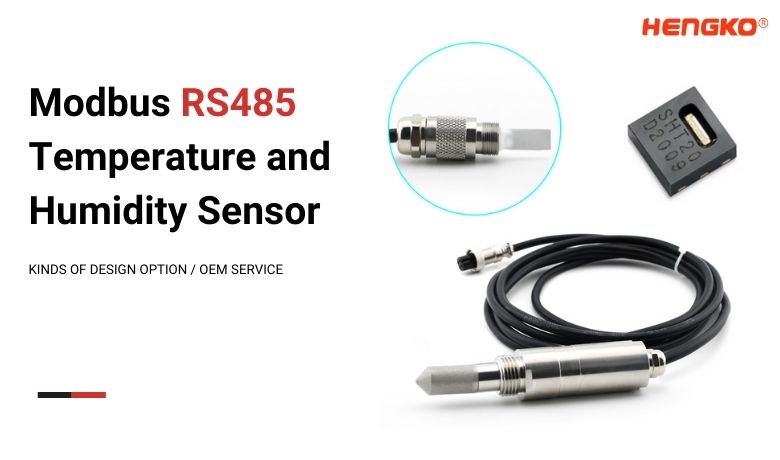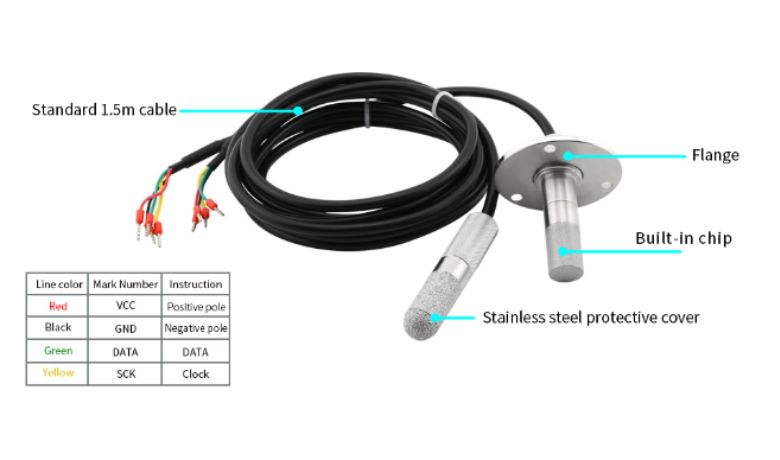-
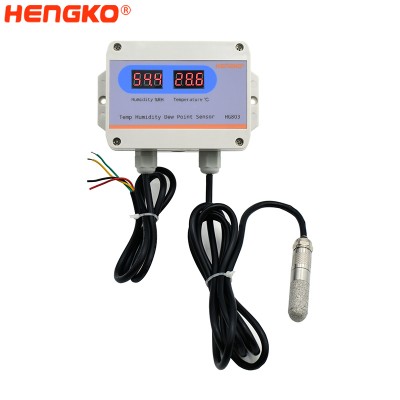
RS485 Dew Point Temperature Humidity Transmitter HT803 Series
Experience Enhanced Control and Energy Efficiency with Our HT-803 Series Temperature and Humidity Transmitters! Uncover the ideal solution for HVAC, building...
View Detail -

RS485 Flange Dew Point Temperature Humidity Transmitter HT803 Series
Experience Enhanced Control and Energy Efficiency with Our HT-803 Series Temperature and Humidity Transmitters! Uncover the ideal solution for HVAC, building...
View Detail -
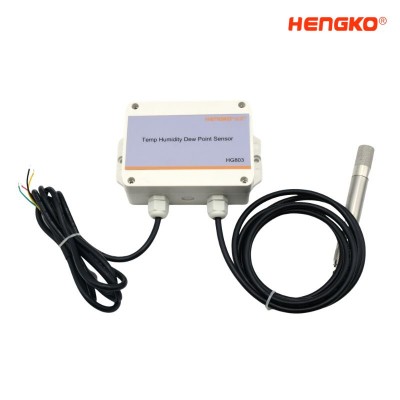
RS485 Temperature and Humidity Transmitter Split Series Dew Point HT803
Experience Enhanced Control and Energy Efficiency with Our HT-803 Series Temperature and Humidity Transmitters! Uncover the ideal solution for HVAC, building...
View Detail -
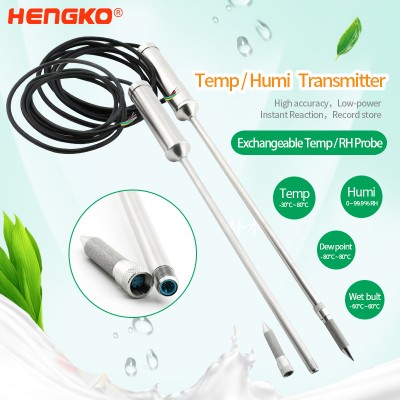
HENGKO Hand-Held HT-608 d Digital Humidity and Temperature Meter, Data Logger for Spot-...
The robust sintered metal housing of the non-sensitive HENGKO HT608 d handheld dew point meter data logger protects it against mechanical impacts. It can the...
View Detail -
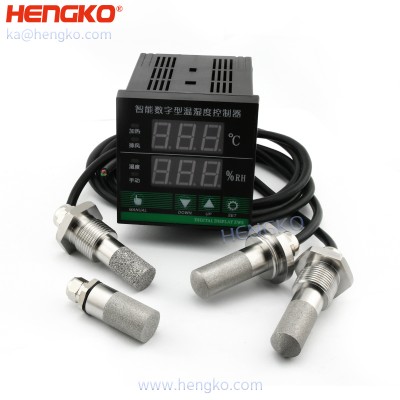
HT705 digital temperature humidity controller with 0~100%RH relative humidity probe for...
HENGKO temperature and humidity control high precision RHT series sensor equipped with a sintered metal filter shell for large air permeability, fast ...
View Detail -
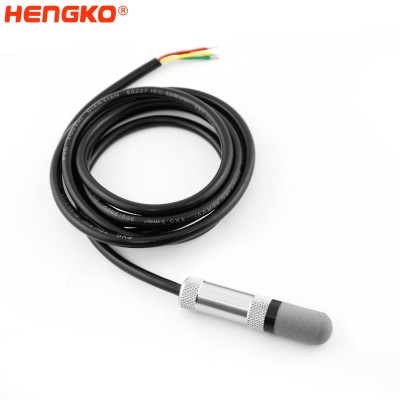
RS485 Modbus Air Temperature and Humidity Sensor HT-609
The HT-609 is a RS-485 remote temperature and humidity sensor that gives you real time temperature and humidity measurement data at the same time. It contain...
View Detail -
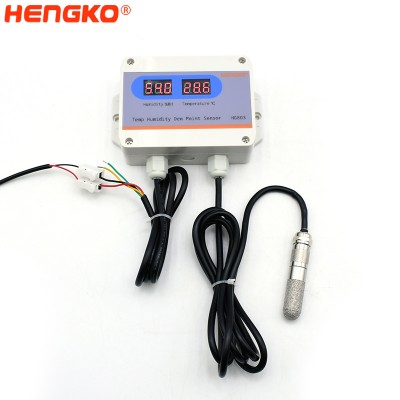
RS485 HG803 High Accuracy Duct Mount Dew Point Temperature and Humidity Transmitter wit...
✔ Temperature, Dew point, and Humidity Transmitter ✔ Precision ±0.3°C Temperature Accuracy ✔ ±2% Relative Humidity (RH) Accuracy ✔ Industrial Grade Sensor...
View Detail -
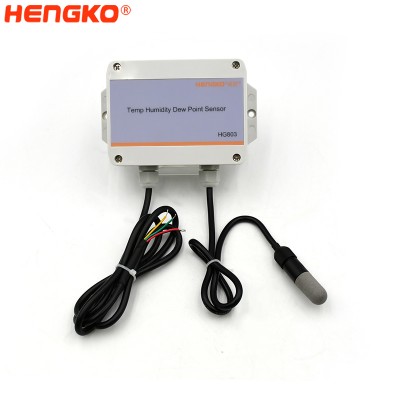
HG803 IP67 Relative Humidity and Temperature Transmitter Wholesale
The HG803 Split Series Temperature and Humidity Transmitter is an advanced, industrial-grade solution designed for precise and reliable environmental monitor...
View Detail -

Temperature and Humidity Monitor for IoT Applications HG803 Humidity Sensor
Product Describe HG803 Series Temperature and Humidity Monitor has been designed to measure, monitor and record temperature and humidity. It is a perfect so...
View Detail -

HG803 remote temperature and relative humidity transmitter with porous humidity probe p...
Product Describe HG803 Series Temperature and Humidity Monitor has been designed to measure, monitor and record temperature and humidity. It is a perfect sol...
View Detail -
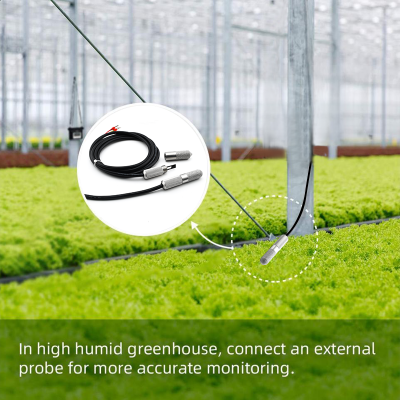
Humidity Sensor Probe with Dew Point , -30~80°C,0~100%RH RS485/MODBUS-RTU HT-800
HT-800 series miniature humidity transmitter adopts RHT series temperature and humidity transmitter imported from Swiss Sensirion, which can collect tempera...
View Detail -
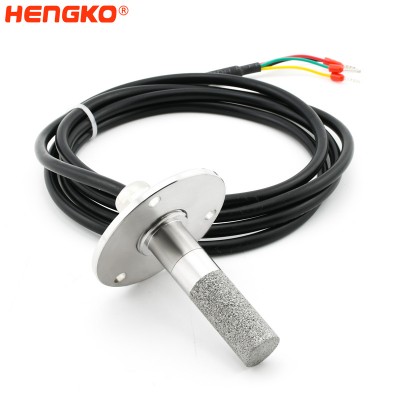
Industrial Miniature Temperature and Humidity Transmitter for Pipeline Machine Room Pot...
Ideal for continuous monitoring of dryers, furnaces, and compressed air systems IP65 rated housing protects in heavy-duty environments Precisely measure the...
View Detail -
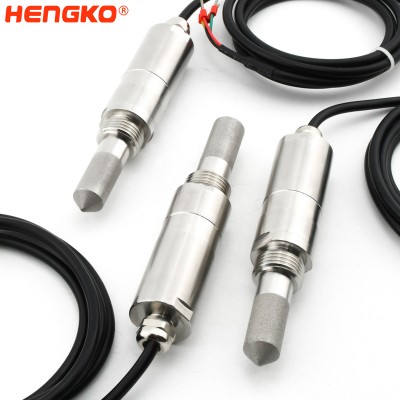
Fast Response Digital Dew Point Temperature and Relative Humidity Probe Sensor and Tran...
HENGKO HT-608 dew point transmitter is suitable for refrigerated air dryer/adsorption dryer of dew point monitoring, reducing insensitivity temperature zone,...
View Detail
Why Use RS485 Temperature Humidity Sensor
Modbus RS485 temperature and humidity sensor offer several advantages that make them a popular choice in various applications:
1. Long-Distance Communication:
RS485 is a robust and reliable communication protocol that allows data transmission over long distances, typically up to 1200 meters. This makes RS485 humidity sensors suitable for applications that require sensor placement far from the data acquisition system or control unit.
2. High Noise Immunity:
RS485 communication is differential, meaning it transmits data as a voltage difference between two wires. This design provides better noise immunity compared to single-ended communication protocols, making RS485 humidity sensors suitable for industrial environments with high electromagnetic interference.
3. Multiple Sensor Integration:
RS485 allows multiple sensors to be connected on the same bus, sharing a single communication line. This feature simplifies wiring and reduces installation costs, especially in situations where multiple humidity sensors are needed in close proximity.
4. Real-time Data Monitoring:
RS485 humidity sensors provide real-time data monitoring, allowing continuous and accurate humidity measurements. This is essential in applications where immediate response to changes in humidity levels is crucial, such as in environmental monitoring or HVAC systems.
5. Data Integrity and Error Checking:
The RS485 protocol includes error-checking mechanisms, ensuring data integrity during transmission. It helps identify and correct any communication errors, making RS485 humidity sensors reliable for critical applications where accurate data is essential.
6. Compatibility and Interoperability:
RS485 is a widely used standard in the industry, ensuring compatibility and interoperability with various devices and systems. This allows for seamless integration of RS485 humidity sensors into existing setups without the need for extensive modifications.
7. Low Power Consumption:
RS485 humidity sensors are designed to be energy-efficient, making them suitable for applications where power consumption needs to be minimized.
Overall, RS485 humidity sensors offer a cost-effective, reliable, and flexible solution for humidity monitoring in industrial, commercial, and research environments, where accurate and stable humidity measurements are vital for optimal performance and efficiency.
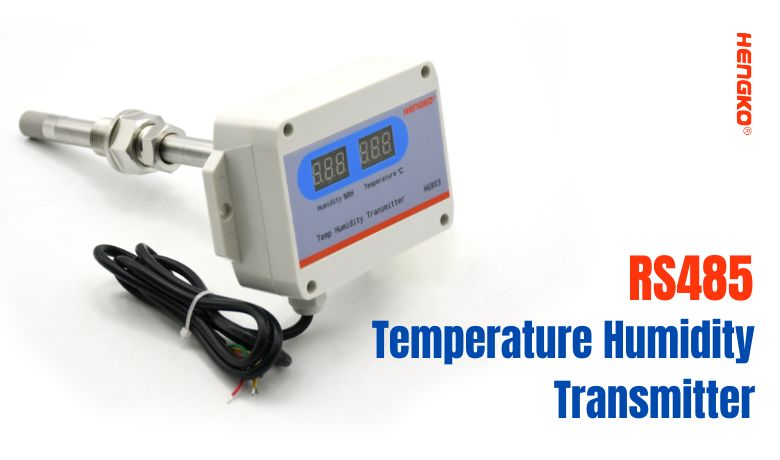
Main Features of RS485 Temperature and Humidity Sensor ?
The main features of an RS485 Temperature and Humidity Sensor typically include:
1. Accurate Measurements:
RS485 temperature and humidity sensors are designed to provide precise and reliable measurements of both temperature and relative humidity. These sensors utilize high-quality components and calibration to ensure accuracy in various environmental conditions.
2. RS485 Communication Protocol:
The sensor employs the RS485 communication protocol, enabling long-distance data transmission and robust communication. RS485 is well-known for its noise immunity and allows multiple sensors to be connected on the same bus, simplifying wiring and integration.
3. Wide Operating Range:
The sensor is capable of operating effectively across a broad temperature and humidity range, making it suitable for diverse applications, from extreme environmental conditions to controlled indoor settings.
4. Digital Output:
RS485 temperature and humidity sensors provide digital output, which facilitates direct integration with data acquisition systems, microcontrollers, PLCs, and other compatible devices. This digital output eliminates the need for analog-to-digital conversion, streamlining data processing.
5. Modularity and Scalability:
These sensors are designed to be modular, allowing for easy scalability in systems that require multiple sensors for comprehensive temperature and humidity monitoring in various locations.
6. Real-time Monitoring:
RS485 temperature and humidity sensors offer real-time monitoring, allowing users to access and react promptly to changing environmental conditions. This feature is crucial in applications such as climate control, greenhouses, and industrial processes.
7. Low Power Consumption:
To optimize energy usage, RS485 temperature and humidity sensors are engineered with low power consumption, making them suitable for long-term continuous monitoring and battery-operated applications.
8. Compact and Durable Design:
The sensor's compact and rugged design ensures it can withstand challenging environments, making it suitable for both indoor and outdoor applications.
9. Calibration and Stability:
RS485 temperature and humidity sensors often come with built-in calibration and stability features, ensuring accurate and consistent measurements over an extended period without significant drift.
10. User-Friendly Interface:
Some models may include a user-friendly interface, such as an LCD screen or configuration software, allowing users to easily set parameters, view readings, and access diagnostic information.
11. Alarm and Alert Functions:
Advanced RS485 temperature and humidity sensors may offer alarm and alert functions, notifying users when readings exceed predefined thresholds, thereby enabling proactive response to potential issues.
In summary, RS485 Temperature and Humidity Sensors combine accuracy, robust communication, and versatility, making them ideal choices for a wide range of applications, including environmental monitoring, HVAC systems, agriculture, warehouses, and industrial automation.
Advantage of RS485 Temperature Humidity Sensor than I2C, 4-20mA ?
RS485 vs I2C and 4-20mA
RS485 Temperature Humidity Sensor offers several advantages over I2C and 4-20mA interfaces:
1. Longer Communication Distance:
RS485 allows data transmission over longer distances compared to I2C, which is typically limited to a few meters. This makes RS485 more suitable for applications where the sensor needs to be located far away from the data acquisition system or control unit.
2. Multiple Sensor Integration:
RS485 supports multi-drop communication, meaning you can connect multiple sensors on the same communication bus. This feature reduces wiring complexity and simplifies the integration of multiple sensors within a network, whereas I2C might require more complex wiring for each sensor.
3. Higher Noise Immunity:
RS485 is a differential communication protocol, which makes it highly immune to noise and interference, especially in industrial environments with significant electromagnetic interference. On the other hand, I2C can be susceptible to noise, and its performance might degrade in noisy environments.
4. Faster Data Transfer:
RS485 generally offers faster data transfer rates compared to I2C, resulting in quicker response times for real-time monitoring applications. This is especially beneficial in applications where rapid updates of temperature and humidity data are essential.
5. Compatibility and Interoperability:
RS485 is a widely used standard in industrial applications, ensuring better compatibility and interoperability with various devices and systems. In contrast, I2C might require additional level-shifting circuitry to interface with certain devices that operate at different voltage levels.
6. Lower Power Consumption:
RS485 consumes lower power compared to 4-20mA, especially when multiple sensors are connected. 4-20mA sensors require a constant current loop, which can consume more power, making RS485 a better choice for energy-efficient applications.
7. Digital Communication and Addressing:
RS485 is a digital communication protocol that allows for easy addressing of individual sensors on the bus. This enables straightforward identification and communication with specific sensors in the network. In contrast, 4-20mA sensors usually don't have built-in addressing, and individual sensors might be harder to distinguish in the system.
8. Reduced Wiring Costs:
With RS485's multi-drop capability, you can reduce the number of communication lines required, resulting in lower wiring costs compared to individual 4-20mA connections for each sensor.
Overall, RS485 Temperature Humidity Sensor is advantageous in applications that demand long-distance communication, multiple sensor integration, noise immunity, faster data transfer, and compatibility with existing industrial systems. However, the choice between RS485, I2C, and 4-20mA ultimately depends on the specific requirements and constraints of the application at hand.
Types of RS485 temperature humidity Sensor ?
RS485 temperature humidity sensors come in various types and configurations to suit different applications. You can
Check Some Types of RS485 Temperature and Humidity Sensor By Function, Installation Way, Hope You can Easy
Find the Right One for Your Monitor System Projects.
1. Integrated RS485 Temperature Humidity Sensor:
This type of sensor combines both temperature and humidity sensing elements in a single unit. It provides RS485 communication for easy integration into monitoring and control systems. These sensors are compact and suitable for applications where both temperature and humidity measurements are essential, such as HVAC systems, environmental monitoring, and climate control.
2. Wall-Mounted RS485 Temperature Humidity Sensor:
Wall-mounted sensors are designed for easy installation on walls or surfaces. They are commonly used in indoor environments, such as offices, warehouses, and server rooms, to monitor and control the indoor climate conditions for comfort and energy efficiency.
3. Duct-Mounted RS485 Temperature Humidity Sensor:
Duct-mounted sensors are specifically designed to be installed in ventilation ducts or HVAC systems. They provide temperature and humidity measurements for precise climate control and ventilation management in commercial and industrial buildings.
4. Outdoor RS485 Temperature Humidity Sensor:
These sensors are built to withstand harsh outdoor conditions, including exposure to moisture, dust, and varying temperatures. They are used in weather stations, agriculture, and environmental monitoring applications.
5. Industrial RS485 Temperature Humidity Sensor:
Industrial-grade sensors are designed to operate reliably in demanding environments, such as factories, manufacturing plants, and industrial processes. They often have rugged enclosures to protect the sensor elements from physical damage and resistance to chemicals and contaminants.
6. Probe-Style RS485 Temperature Humidity Sensor:
Probe-style sensors consist of a separate sensing probe and a connecting cable. They offer flexibility in positioning the probe in hard-to-reach areas or locations with space constraints. These sensors are suitable for applications in research, laboratories, and specialized industrial processes.
7. Wireless RS485 Temperature Humidity Sensor:
Some RS485 temperature humidity sensors may also have wireless capabilities, allowing them to communicate via RS485 and wirelessly. These sensors offer additional flexibility in installation and data transmission for remote or inaccessible locations.
8. Data Logger RS485 Temperature Humidity Sensor:
Data logger sensors can record and store temperature and humidity data over time. They are commonly used in applications that require data logging for analysis, validation, or compliance purposes.
Each type of RS485 temperature humidity sensor has its unique advantages and is designed to cater to specific needs. When selecting a sensor, it's essential to consider the environmental conditions, required accuracy, integration capabilities, and the intended application to ensure the best fit for the project.
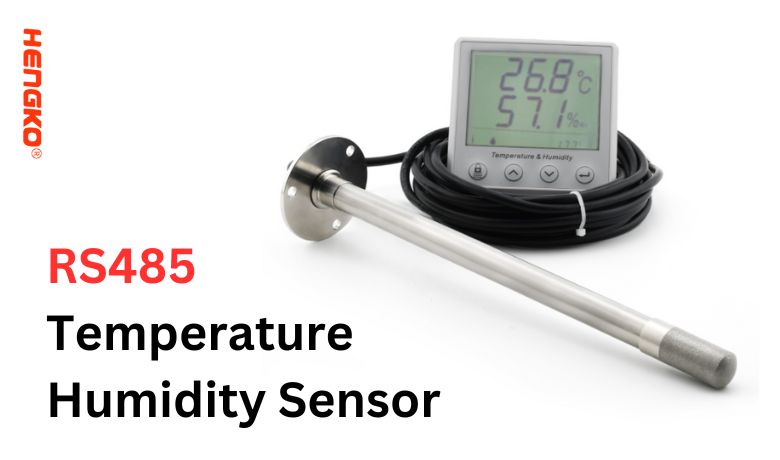
How to Choose Modbus RS485 Temperature and Humidity Sensor ?
Choosing the right Modbus RS485 temperature and humidity sensor involves considering several key factors to ensure it meets your specific requirements. Here are some essential steps to help you make an informed decision:
1. Application Requirements:
Begin by identifying the specific application where you'll use the sensor. Different environments and industries may have varying temperature and humidity ranges, accuracy requirements, and installation conditions. Consider whether you need a sensor for indoor monitoring, outdoor weather stations, HVAC systems, industrial processes, or other specialized applications.
2. Measurement Range and Accuracy:
Check the sensor's temperature and humidity measurement range to ensure it covers the required parameters for your application. Additionally, consider the accuracy of the sensor's measurements. Higher accuracy may be crucial in applications where precision is essential, such as research or industrial control systems.
3. Sensor Type:
Decide on the type of sensor that best suits your needs. You can choose from integrated sensors (combining both temperature and humidity measurements), separate temperature and humidity sensors, duct-mounted sensors, outdoor sensors, industrial-grade sensors, or other specialized types based on your application's requirements.
4. RS485 Modbus Communication:
Ensure that the sensor supports RS485 Modbus communication, as this is the primary feature you need for integration with your data acquisition system or controller. Check the Modbus communication protocol specifications (e.g., RTU or ASCII) to match your system's requirements.
5. Power Supply and Consumption:
Verify the sensor's power supply requirements and power consumption. Depending on your application, you may need a sensor that operates on a specific voltage level or has low power consumption for energy efficiency.
6. Environmental Protection:
Consider the environmental conditions where the sensor will be deployed. If the sensor is for outdoor use or harsh industrial environments, make sure it has appropriate IP (Ingress Protection) or NEMA ratings to withstand dust, moisture, and other contaminants.
7. Mounting Options:
Evaluate the mounting options available for the sensor. Depending on your application and available space, you may need a wall-mounted, duct-mounted, or probe-style sensor.
8. Calibration and Stability:
Look for sensors that come with calibration certificates or provide information about their long-term stability. Calibrated sensors ensure accurate and reliable measurements, while stable sensors experience minimal drift over time.
9. Data Logging and Alarms:
Determine if you need data logging capabilities to record temperature and humidity data over time. Some sensors offer onboard data logging or support external data loggers. Additionally, consider whether you require alarm functionalities to alert you when the readings exceed predefined thresholds.
10. Support and Documentation:
Ensure that the sensor manufacturer provides adequate support, technical documentation, and resources. Look for user manuals, datasheets, and application notes to understand the sensor's features and integration requirements better.
11. Budget:
Finally, consider your budget constraints and select a sensor that fits within your allocated budget while still meeting your essential requirements.
By following these steps and carefully evaluating the specifications and features of different Modbus RS485 temperature and humidity sensors, you can make a well-informed decision and choose a sensor that best suits your application's needs.
Some Other FAQs about RS485 Humidity Sensor
1. What is an RS485 humidity sensor?
In Short , An RS485 humidity sensor is a device that measures and monitors the relative humidity of the surrounding environment
and communicates the data using the RS485 communication protocol.
2. What are the key features of RS485 temperature humidity sensors?
Here, we list some key features of RS485 humidity sensors include, hope it will be helpful for your understand better RS485:
1. Accurate Humidity Measurement:
RS485 humidity sensors provide precise and reliable measurements of relative humidity, ensuring accurate monitoring of environmental conditions.
2. RS485 Communication:
These sensors use the RS485 communication protocol, allowing for long-distance data transmission and multi-sensor integration on the same communication bus.
3. High Noise Immunity:
RS485 communication is differential, providing better resistance to noise and interference, making the sensors suitable for industrial environments with electromagnetic interference.
4. Digital Output:
The sensors offer digital data output, simplifying integration with various data acquisition systems, controllers, and microcontrollers.
5. Wide Operating Range:
RS485 humidity sensors can operate across a broad range of humidity levels, making them adaptable to various environmental conditions.
6. Real-Time Monitoring:
These sensors enable real-time humidity monitoring, providing instant feedback for prompt response to changing conditions.
7. Low Power Consumption:
RS485 humidity sensors are designed to be energy-efficient, making them suitable for long-term continuous monitoring and battery-powered applications.
8. Modularity and Scalability:
The sensors' modularity allows for easy scalability, making them suitable for applications that require multiple humidity sensors in different locations.
9. Compatibility:
RS485 is a widely used standard in the industry, ensuring compatibility and interoperability with various devices and systems.
10. Durable Design:
RS485 humidity sensors are often built with rugged and durable materials, making them suitable for both indoor and outdoor applications.
11. Calibration and Stability:
High-quality RS485 humidity sensors come with calibration certificates and exhibit stable performance over time, ensuring accurate and reliable measurements.
12. Alarm and Alert Functions:
Some models may feature alarm and alert functions, enabling users to receive notifications when humidity levels exceed predefined thresholds.
13. Versatility:
RS485 humidity sensors are used in a wide range of applications, including environmental monitoring, HVAC systems, weather stations, agriculture, industrial automation, research, and climate control.
14. Easy Integration:
With RS485 communication, these sensors are straightforward to integrate into existing control systems, making them a convenient choice for various projects.
Overall, RS485 humidity sensors offer a comprehensive set of features that make them a popular and reliable choice for monitoring and controlling humidity levels in diverse settings.
3. How does RS485 communication work with humidity sensors?
RS485 is a differential communication protocol that allows multiple sensors to share the same communication bus. Each sensor on the bus has a unique address, and data is transmitted in a balanced manner, providing better noise immunity and long-distance communication capabilities.
4. What is the typical operating range of RS485 humidity sensors?
RS485 humidity sensors typically operate in a wide range of humidity levels, often from 0% to 100% relative humidity, covering various environmental conditions.
5. Can RS485 humidity sensors measure temperature as well?
Some RS485 humidity sensors are designed to include a built-in temperature sensor, allowing them to provide both temperature and humidity measurements in a single device.
6. What are the applications of RS485 humidity sensors?
RS485 humidity sensors find applications in environmental monitoring, HVAC systems, weather stations, agriculture, industrial automation, research, laboratories, and climate control in commercial and residential buildings. you can check details list as following:
RS485 humidity sensors find a wide range of applications in various industries and environments. Some common applications include:
1. Environmental Monitoring:
RS485 humidity sensors are used in environmental monitoring systems to measure and record humidity levels in the air. They are valuable in assessing the comfort and health of occupants in buildings and ensuring optimal conditions for sensitive equipment.
2. HVAC Systems:
Heating, Ventilation, and Air Conditioning (HVAC) systems utilize RS485 humidity sensors to control indoor humidity levels. Maintaining the right humidity is crucial for occupant comfort and energy efficiency.
3. Agriculture and Greenhouses:
RS485 humidity sensors play a vital role in agriculture and greenhouse environments, where precise control of humidity is necessary for optimal plant growth and crop yield.
4. Weather Stations:
Weather stations incorporate RS485 humidity sensors to monitor and report humidity levels as part of comprehensive weather data collection.
5. Industrial Automation:
RS485 humidity sensors are used in industrial automation processes to ensure the appropriate humidity level in manufacturing environments. This is important for processes that involve sensitive materials or products.
6. Cleanrooms and Laboratories:
In cleanroom facilities and laboratories, maintaining precise humidity levels is crucial for research, production processes, and handling sensitive materials.
7. Museums and Archives:
RS485 humidity sensors help preserve artwork, historical artifacts, and documents in museums and archives by maintaining stable humidity conditions to prevent damage.
8. Data Centers:
In data centers, RS485 humidity sensors monitor and control humidity levels to ensure optimal operating conditions for servers and sensitive electronic equipment.
9. Pharmaceutical Industry:
RS485 humidity sensors are used in pharmaceutical manufacturing to control humidity levels during production processes, ensuring product quality and compliance.
10. Food Processing and Storage:
The food industry employs RS485 humidity sensors to monitor humidity levels in processing areas and storage facilities, preventing spoilage and ensuring product quality.
11. Indoor Air Quality (IAQ) Monitoring:
RS485 humidity sensors are part of IAQ monitoring systems that assess the overall air quality in buildings to ensure a healthy indoor environment.
12. Transportation:
RS485 humidity sensors are used in transportation systems, such as trains, airplanes, and ships, to monitor and regulate humidity levels for passenger comfort and cargo preservation.
13. Pharmacies and Hospitals:
In medical settings, RS485 humidity sensors are used to maintain optimal humidity levels in storage areas and hospital rooms, especially for sensitive medications and equipment.
14. Energy Management:
RS485 humidity sensors play a role in energy management systems, helping optimize HVAC operations and reduce energy consumption in buildings.
15. Livestock and Poultry Farms:
RS485 humidity sensors are used in livestock and poultry farms to monitor and regulate humidity levels, ensuring the well-being and productivity of the animals.
These are just a few examples of the many applications where RS485 humidity sensors are employed to monitor and control humidity levels, contributing to improved efficiency, comfort, and quality in various industries and settings.
7. How Accurate are RS485 humidity sensors?
The accuracy of RS485 humidity sensors can vary based on the sensor's quality and calibration.
Higher-quality sensors can provide accurate readings with deviations typically within a few percentage points.
8. Can RS485 humidity sensors be used outdoors?
Yes, there are RS485 humidity sensors specifically designed for outdoor use. They come with robust enclosures and weatherproof features to withstand exposure to harsh outdoor conditions.
9. Do RS485 humidity sensors require calibration?
Yes, like any measuring instrument, RS485 humidity sensors may require periodic calibration to maintain accurate readings over time. Calibration certificates are often provided by the manufacturer.
10. Can RS485 humidity sensors be integrated into existing control systems?
Yes, RS485 humidity sensors are designed to be compatible with various control systems, PLCs, data acquisition units, and microcontrollers, making integration into existing setups relatively straightforward.
11. Do RS485 humidity sensors support data logging and alarms?
Some RS485 humidity sensors come with built-in data logging capabilities, allowing them to record humidity data over time. Additionally, certain models may support alarm functions to trigger alerts when humidity levels go beyond predetermined thresholds.
12. What is the typical response time of RS485 humidity sensors?
The response time of RS485 humidity sensors can vary depending on the sensor's design and environmental conditions. Generally, the response time ranges from a few seconds to a few minutes.
13. Can RS485 humidity sensors be used in cleanroom environments?
Yes, certain RS485 humidity sensors are suitable for cleanroom applications. These sensors are designed to meet strict cleanliness requirements and prevent contamination.
14. Are RS485 humidity sensors compatible with different communication protocols?
RS485 humidity sensors are primarily designed for RS485 communication, but some models may also support other protocols like Modbus RTU, ASCII, or Modbus TCP/IP for Ethernet connectivity.
15. Can RS485 humidity sensors be powered by batteries?
Yes, some RS485 humidity sensors are designed for low power consumption, making them suitable for battery-powered applications, remote monitoring, and IoT projects.
16. What maintenance is required for RS485 humidity sensors?
Regular maintenance includes periodic calibration, cleaning, and ensuring proper functioning of the sensor's communication interface.
17. Can RS485 humidity sensors be used in hazardous environments?
Some RS485 humidity sensors are certified for use in hazardous environments and may have intrinsically safe or explosion-proof ratings.
18. Are RS485 humidity sensors suitable for high-temperature applications?
There are specialized RS485 humidity sensors designed for high-temperature environments, with components capable of withstanding elevated temperatures.
19. Can RS485 humidity sensors be integrated with cloud-based systems for remote monitoring?
Yes, RS485 humidity sensors with Modbus TCP/IP or Ethernet compatibility can be integrated with cloud-based systems for remote monitoring and data storage.
HENGKO's RS485 humidity sensors can be suitable for high-temperature applications, but this depends on the specific model and design of the sensor. While RS485 communication is robust and can handle high temperatures, the sensor itself must be designed with materials and components that can withstand elevated temperatures without affecting its accuracy and performance.
Certain RS485 humidity sensor models are specifically designed for high-temperature environments. These sensors may feature:
1. High-Temperature Calibration:
2. Heat-Resistant Enclosures:
3. Temperature Compensation:
4. Wide Operating Temperature Range:
5. Stable Performance:
However, it's essential to check the specifications and datasheets of RS485 humidity sensors to verify their suitability for high-temperature environments. Some RS485 humidity sensors may have limitations on their operating temperature range, and using them beyond their specified limits could result in inaccurate readings or damage to the sensor.
If your application requires humidity monitoring in high-temperature settings, be sure to choose a sensor explicitly rated for such conditions. Additionally, consider any potential heat sources or heat-generating equipment in the vicinity that could affect the accuracy of the sensor's measurements. When in doubt, consult with the sensor manufacturer or a technical expert to select the most appropriate RS485 humidity sensor for your high-temperature application.
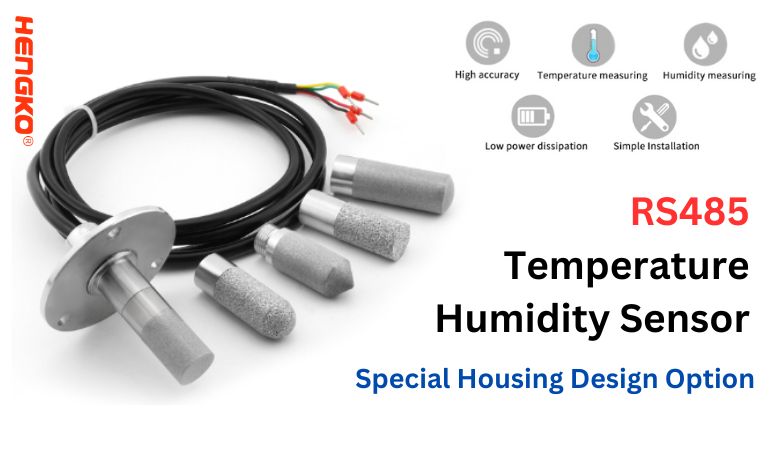
20. What is the typical lifespan of RS485 humidity sensors?
The lifespan of RS485 humidity sensors can vary depending on the sensor's quality, operating conditions, and maintenance. High-quality sensors can last several years with proper care.
Interested in our RS485 Humidity Sensors? For inquiries or to discuss your specific requirements,
please don't hesitate to reach out to us at ka@hengko.com. Our team at HENGKO is ready to assist
you and provide the perfect solution for your temperature and humidity sensing needs.
Contact us today and experience the reliability and accuracy of our cutting-edge products!
